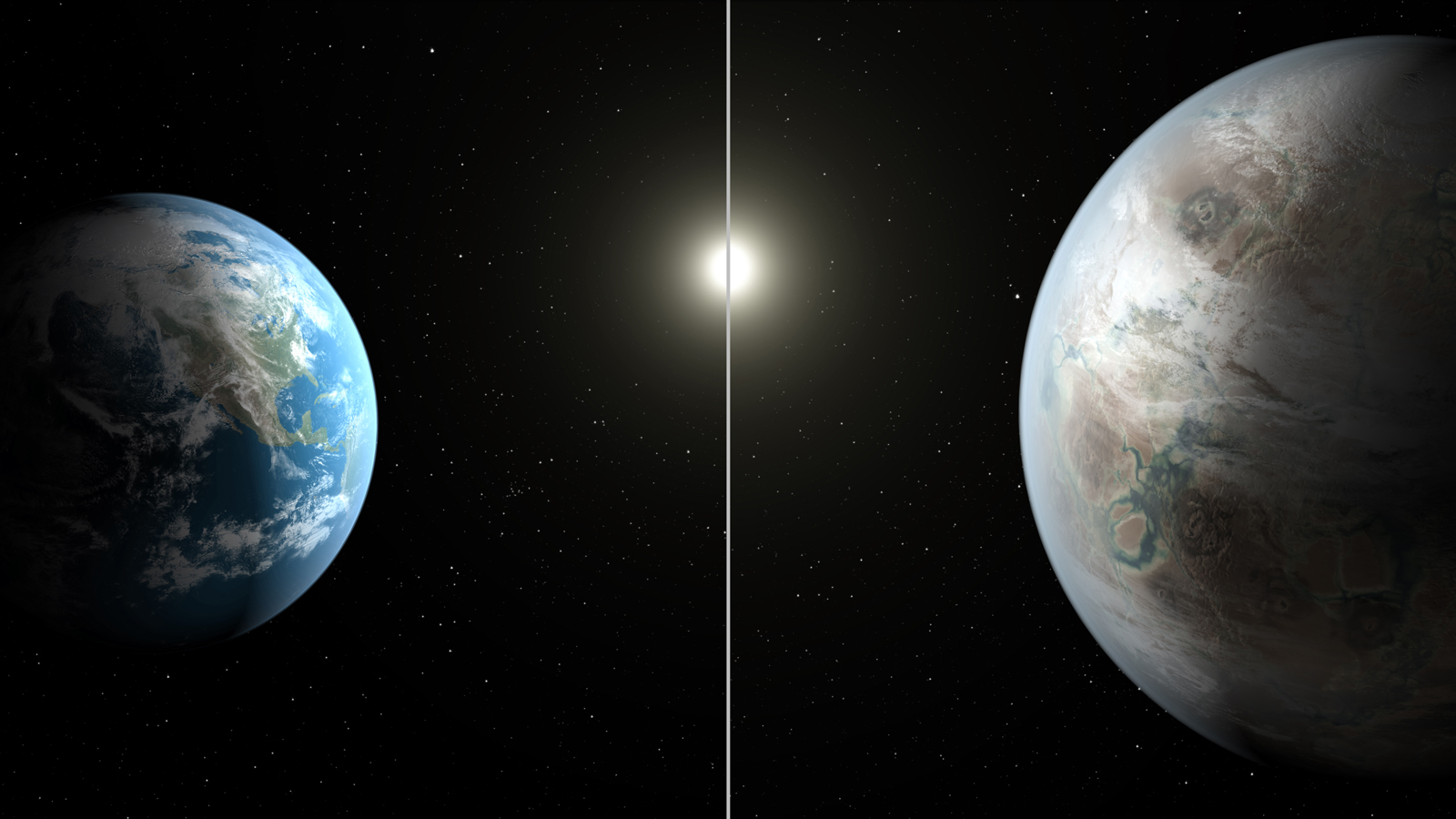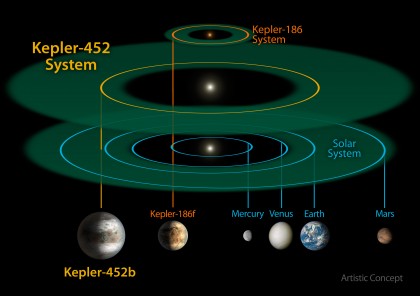NASA just found 'Earth 2.0'
Kepler-452b is the same temperature minus global warming

Earth could become uninhabitable at any moment due to global warming, nuclear annihilation or having to deal with another Paul Blart movie, but luckily NASA just discovered a distant cousin.
Meet Kepler-452b, the planet the agency calls "Earth 2.0." It was discovered by NASA's floating observatory, orbiting in the "habitable zone" of constellation Cygnus.
The "habitable zone" factor is significant because it means the planet is situated in an area around its star where liquid water could pool on the surface of an orbiting planet, according to NASA.
At a distance of 1,400 light-years away, it's too far away to travel to right now. But it's promising to hear that temperatures are consistent with those on Earth, and it spins around a G2-type star, the same stellar classification as our Sun.
It was sitting there the entire time
Although Kepler-452b was only recently discovered, the Earth-like planet is actually 60% bigger than our home, officially giving it NASA's super-Earth-size status.

It's also orbiting a sun, Kepler-452, that is 6 billion years old, which is 1.5 billion years older than our Sun. Bust out the intergalactic shades, because it still shines bright. The alien sun is 20% brighter and has a diameter 10% larger than our home star.
Despite this, the Kepler-452b orbit takes 385 days, or only 5% longer than Earth's orbit. Fingers crossed all 20 extra days are in the summer.
Get daily insight, inspiration and deals in your inbox
Sign up for breaking news, reviews, opinion, top tech deals, and more.
NASA says that the planet's mass and composition have yet to be determined, but that it's "a good chance of being rocky." This makes the "Earth 2.0" nickname more meaningful and gives Hollywood enough reason to put Matt Damon in a third space movie in a year's time.
- This is what you need to know about iPhone 6S and iOS 9
